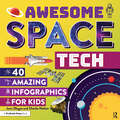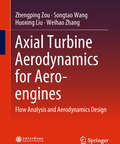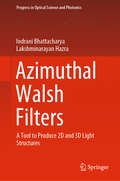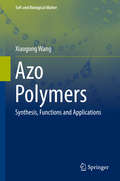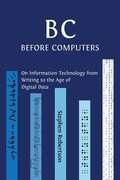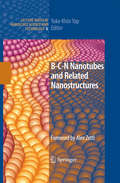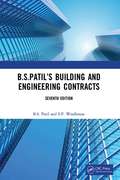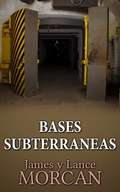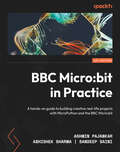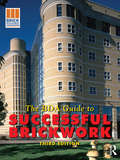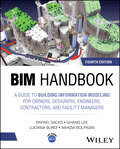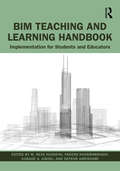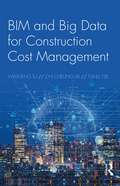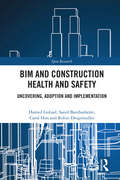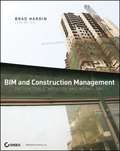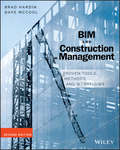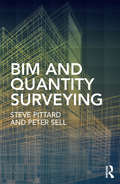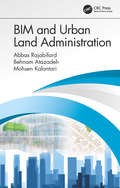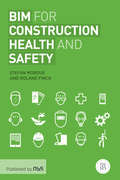- Table View
- List View
Awesome Robotics Projects for Kids: 20 Original STEAM Robots and Circuits to Design and Build (Awesome STEAM Activities for Kids)
by Bob KatovichBuild your own amazing robots—20 STEAM projects for kids 5 to 10!Get ready to build all kinds of incredible robots—right in your own home! Designed for young robot builders, these do-it-yourself robotics for kids projects will teach you about science, technology, engineering, art, and math (STEAM) as you assemble an amazing collection of real working robots!From scribblebots to two-legged walkers, this book walks you through robotics for kids, one beautifully-photographed project at a time. The robots start out simple and get more advanced as you go, helping you boost your skills (and your confidence) at the same time. Get started today!This exciting guide to robotics for kids includes:20 awesome projects—Rock the world of robotics for kids with nearly two-dozen different designs for bots that glow, draw, walk, climb, and more.Full-color photos—Construction is easy thanks to clear directions and 200 step-by-step pictures that help you build your robot right.Robots in the world—Chapters are divided based on the functions of robots, showing you how they can be used to help in your day-to-day life.Discover one of the most fun ways to get into robotics for kids!
Awesome Space Tech: 40 Amazing Infographics for Kids
by Jennifer Dlugos Charlie HattonSpace may be the "final frontier"—but how do we learn about it, look deeper into it, and live in it? The infographics in this book will rocket you through a universe of powerful telescopes, distant probes, and high-speed spacecraft. Get ready to buzz by comets, land on alien planets, peer into the universe's past, and go where no one (except a handful of rovers and space probes) has gone before! We live in a complicated cosmos, but this book breaks down the complex, the confusing, and the downright kooky to reveal the fascinating details and hidden wonders that are out of this world.Ages 9-12
Awkward Intelligence: Where AI Goes Wrong, Why It Matters, and What We Can Do about It
by Katharina A. ZweigAn expert offers a guide to where we should use artificial intelligence—and where we should not.Before we know it, artificial intelligence (AI) will work its way into every corner of our lives, making decisions about, with, and for us. Is this a good thing? There&’s a tendency to think that machines can be more &“objective&” than humans—can make better decisions about job applicants, for example, or risk assessments. In Awkward Intelligence, AI expert Katharina Zweig offers readers the inside story, explaining how many levers computer and data scientists must pull for AI&’s supposedly objective decision making. She presents the good and the bad: AI is good at processing vast quantities of data that humans cannot—but it&’s bad at making judgments about people. AI is accurate at sifting through billions of websites to offer up the best results for our search queries and it has beaten reigning champions in games of chess and Go. But, drawing on her own research, Zweig shows how inaccurate AI is, for example, at predicting whether someone with a previous conviction will become a repeat offender. It&’s no better than simple guesswork, and yet it&’s used to determine people&’s futures. Zweig introduces readers to the basics of AI and presents a toolkit for designing AI systems. She explains algorithms, big data, and computer intelligence, and how they relate to one another. Finally, she explores the ethics of AI and how we can shape the process. With Awkward Intelligence. Zweig equips us to confront the biggest question concerning AI: where we should use it—and where we should not.
Axial Turbine Aerodynamics for Aero-engines: Flow Analysis and Aerodynamics Design
by Zhengping Zou Songtao Wang Huoxing Liu Weihao ZhangThis book is a monograph on aerodynamics of aero-engine gas turbines focusing on the new progresses on flow mechanism and design methods in the recent 20 years. Starting with basic principles in aerodynamics and thermodynamics, this book systematically expounds the recent research on mechanisms of flows in axial gas turbines, including high pressure and low pressure turbines, inter-turbine ducts and turbine rear frame ducts, and introduces the classical and innovative numerical evaluation methods in different dimensions. This book also summarizes the latest research achievements in the field of gas turbine aerodynamic design and flow control, and the multidisciplinary conjugate problems involved with gas turbines. This book should be helpful for scientific and technical staffs, college teachers, graduate students, and senior college students, who are involved in research and design of gas turbines.
Axiomatic Design in Large Systems: Complex Products, Buildings and Manufacturing Systems
by Amro M. Farid Nam P. SuhThis book provides a synthesis of recent developments in Axiomatic Design theory and its application in large complex systems. Introductory chapters provide concise tutorial materials for graduate students and new practitioners, presenting the fundamentals of Axiomatic Design and relating its key concepts to those of model-based systems engineering. A mathematical exposition of design axioms is also provided. The main body of the book, which represents a concentrated treatment of several applications, is divided into three parts covering work on: complex products; buildings; and manufacturing systems. The book shows how design work in these areas can benefit from the scientific and systematic underpinning provided by Axiomatic Design, and in so doing effectively combines the state of the art in design research with practice. All contributions were written by an international group of leading proponents of Axiomatic Design. The book concludes with a call to action motivating further research into the engineering design of large complex systems.
Azimuthal Walsh Filters: A Tool to Produce 2D and 3D Light Structures (Progress in Optical Science and Photonics #10)
by Indrani Bhattacharya Lakshminarayan HazraThis book explores the possibility of using azimuthal Walsh filters as an effective tool for manipulating far-field diffraction characteristics near the focal plane of rotationally symmetric imaging systems. It discusses the generation and synthesis of azimuthal Walsh filters, and explores the inherent self-similarity presented in various orders of these filters, classifying them into self-similar groups and sub-groups. Further, it demonstrates that azimuthal Walsh filters possess a unique rotational self-similarity exhibited among adjacent orders. Serving as an atlas of diffraction phenomena with pupil functions represented by azimuthal Walsh filters of different orders, this book describes how orthogonality and self-similarity of these filters could be harnessed to sculpture 2D and 3D light distributions near the focus.
Azo Polymers: Synthesis, Functions and Applications (Soft and Biological Matter)
by Xiaogong WangThis book explores functional polymers containing aromatic azo chromophores in side-chain, main-chain and other parts of their structures, known as azo polymers and which share common photoresponsive properties. It focuses on the molecular architecture of azo polymers, the synthetic methods and their most important functions, such as photoinduced birefringence and dichroism, surface-relief-grating (SRG) formation, and light-driven deformation of liquid crystal elastomers. It combines a general survey of the subject and in-depth discussions of each topic, including numerous illustrations, figures, and photographs. Offering a balance between an introduction to the core concepts and a snapshot of hot and emerging topics, it is of interest to graduate students and researchers working in this and related fields. Xiaogong Wang is a Professor at the Department of Chemical Engineering, Tsinghua University, China.
B C, Before Computers: On Information Technology From Writing To The Age Of Digital Data
by Stephen RobertsonThe idea that the digital age has revolutionized our day-to-day experience of the world is nothing new, and has been amply recognized by cultural historians. In contrast, Stephen Robertson's BC: Before Computers is a work which questions the idea that the mid-twentieth century saw a single moment of rupture. It is about all the things that we had to learn, invent, and understand - all the ways we had to evolve our thinking - before we could enter the information technology revolution of the second half of the twentieth century. Its focus ranges from the beginnings of data processing, right back to such originary forms of human technology as the development of writing systems, gathering a whole history of revolutionary moments in the development of information technologies into a single, although not linear narrative. <p><p> Treading the line between philosophy and technical history, Robertson draws on his extensive technical knowledge to produce a text which is both thought-provoking and accessible to a wide range of readers. The book is wide in scope, exploring the development of technologies in such diverse areas as cryptography, visual art and music, and the postal system. Through all this, it does not simply aim to tell the story of computer developments but to show that those developments rely on a long history of humans creating technologies for increasingly sophisticated methods of manipulating information. <p> Through a clear structure and engaging style, it brings together a wealth of informative and conceptual explorations into the history of human technologies, and avoids assumptions about any prior knowledge on the part of the reader. As such, it has the potential to be of interest to the expert and the general reader alike.
B-C-N Nanotubes and Related Nanostructures (Lecture Notes in Nanoscale Science and Technology #6)
by Yoke Khin YapCarbon nanotubes (CNTs) and Boron nitride nanotubes (BNNTs) are part of the so-called B-C-N material system, which includes novel nanostructures of carbon (C), doped-carbon, boron (B), boron nitride (BN), carbon nitride (CNx), boron-carbon nitride (BxCyNz), and boron carbide (BxCy). BNNTs and CNTs are structurally similar and share extraordinary mechanical properties, but they differ in chemical, biological, optical, and electrical properties. Therefore, hybrid nanotubes constructed of B, C, N elements are expected to form a new class of nanotubes with tunable properties between those of CNTs and BNNTs. In addition, these B-C-N nanostructures will further enhance and complement the applications of CNTs and BNNTs. With contributions from leading experts, B-C-N Nanotubes and Related Nanostructures is the first book to cover all theoretical and experimental aspects of this emerging material system, and meets the need for a comprehensive summary of the tremendous advances in research on B-C-N materials in recent years.
B.S.Patil’s Building and Engineering Contracts, 7th Edition
by B.S. Patil S.P. WoolhouseFrom the standpoint of practising engineers, architects and contractors, the law of contract is the most important one and, from preparation of technical documents to its execution and in the determination of disputes, the engineer or architect must have relevant knowledge. This book acts as a practical guide to building and engineering contracts. All points are explained with illustrations gathered from decided court cases. This book covers the substantive law of contract applicable to building and engineering contracts with updated noteworthy judgments. FIDIC conditions are mentioned at appropriate places with a global focus. Key Features: Guide for a full and thorough understanding of the contractual undertakings of the civil engineering industry, primarily in India Discusses specific conditions which are fertile sources of disputes, referring to and commenting upon the FIDIC conditions Covers internationally adopted standard form conditions of contract with analysis, discussions and interpretations, with decided court cases from India and abroad Focuses on technical civil engineering aspects Addresses cases from countries including UK, US, Canada, Australia, New Zealand and India
BASES SUBTERRANEAS
by Adriana Rojas James Morcan Lance Morcan¿Alguna vez te has preguntado lo que yace bajo nuestros pies? ¿Qué obtienen las superpotencias del mundo levantar sus bunkers secretos subterráneos? BASES SUBTERRANEAS detalles de confirmadas y rumoradas instalaciones subterráneas en Estados Unidos y alrededor del mundo. Conteniendo rara evidencia fotográfica a través de, así como poco conocidas frases de figuras clave gubernamentales, hace un caso competente para que haya un enorme mundo escondido majo la superficie de la Tierra. Los marroquís especulaban que la encubierta infraestructura subterránea puede ser por mucho la más grande que cualquier antes pudo haber supuesto y es posiblemente usada para el desarrollo de tecnologías suprimidas. Sus fuentes incluyen archivos desclasificados, reportes universitarios, documentos de WikiLeaks y entrevistas con personal exmilitar convertidos en soplones que aclaman haber trabajado en “ciudades bajo el suelo”. Bases Subterráneas da una amplia gama de hechos y teorías que ultimadamente permite a los lectores formar sus propias conclusiones. La exposición cubre todo desde: las áreas de evacuación verificadas del Departamento de Defensa de los Estados Unidos bajo la Casa Blanca y el Pentágono, así como sus sitios reconocidos en Mount Weather y Cheyenne Mountain; instalaciones subterráneas en todo el mundo, incluyendo el extenso complejo Mezhgorye de Rusia y la Pine Gap de Australia, administrada por la CIA; los titulares de los periódicos que se habían olvidado hace mucho tiempo y que decían que Adolf Hitler y los altos oficiales de las SS podrían haber construido una colonia nazi bajo la Antártida después de la Segunda Guerra Mundial; los rumores de que las empresas conjuntas entre humanos y extraterrestres están ocurriendo bajo la tierra y que los ciudadanos secuestrados están siendo detenidos en prisiones subterráneas para la experimentación médica ilegal, como la clonación. ¿Por qué la Elite Glob
BBC Micro: A hands-on guide to building creative real-life projects with MicroPython and the BBC Micro:bit
by Ashwin Pajankar Sandeep Saini Abhishek SharmaDevelop real-world interactive physical computing applications using the Micro:bit with more than 100 MicroPython examples with circuit diagramsKey FeaturesExplore hardware programming and leverage the power of the BBC Micro:bit and MicroPythonBuild real-life creative projects step by step with each chapter increasing in complexity and interactivityLearn the features of the Micro:bit and how to interface it with electronic components through circuits and code examplesBook DescriptionThis book is a one-stop guide for learning BBC Micro:bit with MicroPython, exploring many hardware components and programming techniques to provide detailed insights into developing practical applications with the Micro:bit. It will also show you how hardware components can be manipulated using a combination of Micro:bit and MicroPython for developing practical projects. BBC Micro:bit in Practice will help you gain a holistic understanding of the BBC Micro:bit platform and MicroPython programming, guiding you through mini projects aimed at developing practical knowledge of circuit design and writing programs. You'll learn how to write programs for working with built-in LEDs and buttons, interfacing external LEDs, buttons, motors, buzzers, and much more. You'll also work with built-in radio, speakers, accelerometer, and a compass. You'll dive into concepts related to the Micro:bit filesystem, interfacing external displays, and working with libraries in detail before exploring sewable circuits and wearable technology.After reading this Micro:bit book, you'll understand how to apply principles in electronics and MicroPython to create interesting real-life projects from scratch.What you will learnExplore the essentials of the BBC Micro:bit, its hardware specifications, and versionsProgram built-in and external LEDs and buttonsProgram external LED-based displays, buzzers, and stepper motorsUse analog input and pulse width modulation to drive a servo motorDetect gestures with internal sensors such as accelerometer, compass, and magnetometerWork on projects with built-in features such as music, speech, radio, and filesystemExplore the advanced features of the Micro:bitWho this book is forThis book is for anyone who wants to use the combination of MicroPython and the BBC Micro:bit for building exciting real-life projects. Engineers, researchers, hobbyists, and technology instructors working in areas such as embedded systems, electronics, software development, IoT, robotics, teaching, and training will find this book useful for building projects. Prior experience with building basic electronic circuits and any programming language, not necessarily MicroPython, will be helpful.
BBQ 25: The World's Most Flavorful Recipes—Now Made Foolproof
by Adam Perry LangNew York Times Bestelling author and BBQ maestro Adam Perry Lang is back! Serious Barbecue meets A Man, A Can, A Plan in BBQ 25: an ultra-foolproof guide to the 25 most popular barbecue dishes, in a format anyone can follow with guaranteed success.
BDA Guide to Successful Brickwork
by The Brick Development AssociationThe BDA Guide to Successful Brickwork is the definitive practical guide to obtaining successful results in brickwork construction. Written by a team of experts from the Brick Development Association, the representative group in industry for brickwork construction, this best-selling text has now been brought fully in line with the latest British and European Standards, including the requirements of the new European Standard for Bricks EN771-1, to ensure readers are receiving the most up-to-date and accurate information available in the field.Based on actual teaching practice, the book is highly illustrated throughout to increase accessibility of the text for the reader in its exploration of the practical aspects of brickwork. It also includes an extensive glossary of brickwork terms for ease of reference. The third edition contains new material detailing recent innovations in brickwork, in the areas of components, systems and techniques, which includes the development of thin-joint techniques for both brickwork and blockwork.Students following NVQs and Construction Awards in Trowel Occupations (bricklaying route, at Foundation, Intermediate and Advanced level) from CITB, will find this book to be an invaluable source of information which will accompany them throughout their studies. The text has additional relevance to BTEC National and Higher Nationals in Construction, as well as GNVQ Intermediate and AVCE Construction and Built Environment courses. Building professionals concerned with the design, detailing and specification of brickwork will also find The BDA Guide to be an essential reference.
BDS/GPS Dual-Mode Software Receiver: Principles and Implementation Technology (Navigation: Science and Technology #10)
by Yu LuThis book introduces readers to the algorithm of Compass & GPS dual-system software receivers, and to the software implementation. It provides detailed descriptions of key theories in the fields of signal processing, communication, control, and signal estimation. The book is based on the author’s extensive experience in GNSS receiver design. The MATLAB script developed for this book demonstrates most of the key theories and equips the reader with excellent tools for practicing them.
BIM Handbook: A Guide to Building Information Modeling for Owners, Designers, Engineers, Contractors, and Facility Managers
by Rafael Sacks Ghang Lee Marzia Bolpagni Luciana BurdiUnderstand the latest advances in BIM with this fully updated guide Building Information Modeling (BIM) has become an increasingly central component of architecture and the building trades. Modern BIM software has moved beyond the simple 2D and 3D modeling tools of the past to incorporate simulation, analysis, project management, and more. BIM Handbook: A Guide to Building Information Modeling for Owners, Designers, Engineers, Contractors, and Facility Managers has long served as the essential introduction to this subject and its ever-expanding applications. Now fully updated to reflect the increasing standardization of BIM practices and its cutting-edge industry frameworks, the latest edition of this key text remains the fundamental tool for understanding the backbone of innovation in construction technology. Readers of the fourth edition of BIM Handbook will also find: Expanded treatment of the owner’s perspective in BIM and BIM integration Detailed discussion of new industry-specific frameworks such as ISO 19650 Exploration of the relationship between BIM and digital twins for construction, operations, and maintenance BIM Handbook is ideal for any professionals in the building trades, including owners and operators of buildings, architects, engineers, contractors, fabricators, developers of BIM software, and more.
BIM Teaching and Learning Handbook: Implementation for Students and Educators
by M. Reza Hosseini Farzad Khosrowshahi Ajibade Aibinu Sepehr AbrishamiThis book is the essential guide to the pedagogical and industry-inspired considerations that must shape how BIM is taught and learned. It will help academics and professional educators to develop programmes that meet the competences required by professional bodies and prepare both graduates and existing practitioners to advance the industry towards higher efficiency and quality. To date, systematic efforts to integrate pedagogical considerations into the way BIM is learned and taught remain non-existent. This book lays the foundation for forming a benchmark around which such an effort is made. It offers principles, best practices, and expected outcomes necessary to BIM curriculum and teaching development for construction-related programs across universities and professional training programmes. The aim of the book is to: Highlight BIM skill requirements, threshold concepts, and dimensions for practice; Showcase and introduce tried-and-tested practices and lessons learned in developing BIM-related curricula from leading educators; Recognise and introduce the baseline requirements for BIM education from a pedagogical perspective; Explore the challenges, as well as remedial solutions, pertaining to BIM education at tertiary education; Form a comprehensive point of reference, covering the essential concepts of BIM, for students; Promote and integrate pedagogical consideration into BIM education. This book is essential reading for anyone involved in BIM education, digital construction, architecture, and engineering, and for professionals looking for guidance on what the industry expects when it comes to BIM competency.
BIM and 3D GIS Integration for Digital Twins: An Introduction
by Mohsen Kalantari Christian Clemen Mojgan JadidiBuilding information modelling (BIM) uses a combination of technologies and resources to capture, manage, analyse, and display a digital representation of the physical and functional characteristics of a facility. A Geographic Information System (GIS) offers tools for visualising and analysing built and natural environments and their impacts on infrastructure systems, such as land use, transportation, etc. This book offers a framework for how the geospatial and surveying industry can create and integrate BIM with GIS. Through practical implementation methods, readers will learn to merge GIS data with design and BIM data to enable digital twins.This book presents the following features: Integrates BIM and GIS from a geospatial and surveying point of view for the first time; Addresses the creation of BIM from existing constructed buildings instead of typical pre-construction scenarios; Explains how to deliver BIM-suitable surveys to surveyors and geospatial practitioners; Provides surveying and geospatial industry expertise in the collecting, locating, managing, and communicating of BIM; Introduces new knowledge on the validation and integration of BIM and GIS within the spatial industry. This is an excellent book for professionals working with 3D data for built-environment digital twins, such as city planners, land surveyors, and geospatial practitioners. It is also an insightful resource for those working and studying in the fields of GIS, surveying, and geospatial engineering, providing the most current tools and resources for dealing with BIM.
BIM and Big Data for Construction Cost Management
by Weisheng Lu Chi Cheung Lai Tung TseThis book is designed to help practitioners and students in a wide range of construction project management professions to understand what building information modelling (BIM) and big data could mean for them and how they should prepare to work successfully on BIM-compliant projects and maintain their competencies in this essential and expanding area. In this book, the state-of-the-art information technologies that support high-profile BIM implementation are introduced, and case studies show how BIM has integrated core quantity surveying and cost management responsibilities and how big data can enable informed decision-making for cost control and cost planning. The authors' combined professional and academic experience demonstrates, with practical examples, the importance of using BIM and particularly the fusion of BIM and big data, to sharpen competitiveness in global and domestic markets. This book is a highly valuable guide for people in a wide range of construction project management and quantity surveying roles. In addition, implications for project management, facilities management, contract administration, and dispute resolution are also explored through the case studies, making this book essential reading for built environment and engineering professionals.
BIM and Construction Health and Safety: Uncovering, Adoption and Implementation (Spon Research)
by Robin Drogemuller Saeed Banihashemi Hamed Golzad Carol HonThis book aims to conceptualise the implementation of building information modelling (BIM) in the workplace health and safety (WHS) management of construction projects to reduce occupational accidents. The safety performance of the construction industry has always been a concern across the globe, and this devastating reputation has drawn the concern of many nations. The potential functions of BIM can drastically alter the WHS practices of the construction industry. BIM facilitates WHS information exchange and management and supports better collaboration and project planning through virtual visualisation of the construction WHS management process. Despite an increasing interest in BIM, a successful mechanism for employing BIM in construction WHS management is absent. Therefore, this book aims to fill this dearth by presenting a model for the integration of such innovative interventions with the current industry practices in a practical manner through the proper identification of effective areas and evaluation of their impacts on the key criteria of construction projects and organisations. This approach will foster the implementation of BIM in the current state of WHS management in the industry and can potentially reduce occupational accidents on construction sites. This book is essential reading for researchers and professionals interested in how BIM technology can improve health and safety on construction projects. It is intended for engineers, project managers, construction managers, safety officers and safety managers.
BIM and Construction Management
by Brad HardinOffering practical advice and tested techniques, this book serves as the first and only building information modeling (BIM) integration guide for the construction industry. You'll explore crucial construction tasks such as estimating, staging, sustainability testing, multiple model trade coordination, and digital detail resolution. In addition, the book also looks at facility management models and offers a clear picture of how the featured tools, techniques, and workflows can benefit each discipline.
BIM and Construction Management
by Brad Hardin Dave MccoolA sleeker, more comprehensive approach to construction projects BIM and Construction Management, Second Edition is a complete integration guide, featuring practical advice, project tested methods and workflows, and tutorials for implementing Building Information Modeling and technology in construction. Updated to align with the latest software editions from Autodesk, Trimble and Bentley, this book provides a common sense approach to leveraging BIM to provide significant value throughout a project's life cycle. This book outlines a results-focused approach which shows you how to incorporate BIM and other technologies into all phases of construction management, such as: Project planning: Set up the BIM project to succeed right from the start by using the right contracts, the right processes and the right technology Marketing: How to exceed customer expectations and market your brand of BIM to win. Pre-construction: Take a practical approach to engineer out risks in your project by using the model early to virtually build and analyze your project, prior to physical construction. Construction: Leverage the model throughout construction to build safer and with better quality. Field work: Learn how mobile technologies have disrupted the way we work in the field to optimize efficiencies and access information faster. Closeout: Deliver a better product to your customer that goes beyond the physical structure and better prepares them for future operations. Additionally, the book provides a look at technology trends in construction and a thoughtful perspective into potential use cases going forward. BIM and Construction Management, Second Edition builds on what has changed in the construction landscape and highlights a new way of delivering BIM-enabled projects. Aligning to industry trends such as Lean, integrated delivery methods, mobile platforms and cloud-based collaboration this book illustrates how using BIM and technology efficiently can create value.
BIM and Quantity Surveying
by Peter Sell Steve PittardThe sudden arrival of Building Information Modelling (BIM) as a key part of the building industry is redefining the roles and working practices of its stakeholders. Many clients, designers, contractors, quantity surveyors, and building managers are still finding their feet in an industry where BIM compliance can bring great rewards. This guide is designed to help quantity surveying practitioners and students understand what BIM means for them, and how they should prepare to work successfully on BIM compliant projects. The case studies show how firms at the forefront of this technology have integrated core quantity surveying responsibilities like cost estimating, tendering, and development appraisal into high profile BIM projects. In addition to this, the implications for project management, facilities management, contract administration and dispute resolution are also explored through case studies, making this a highly valuable guide for those in a range of construction project management roles. Featuring a chapter describing how the role of the quantity surveyor is likely to permanently shift as a result of this development, as well as descriptions of tools used, this covers both the organisational and practical aspects of a crucial topic.
BIM and Urban Land Administration
by Abbas Rajabifard Behnam Atazadeh Mohsen KalantariRapid urbanization has created an unprecedented pressure on the use of land in cities around the world, resulting in physical and legal complexities. This book explains the theoretical basis and practicality of connecting urban land administration practices with the 3D digital data environment of Building Information Modelling (BIM). The main focus is to adopt a BIM-based paradigm for enhancing communication and management of complex ownership rights in multi-story buildings, which are prevalent in urban built environments. This book first elaborates on a range of data elements required for managing legal information in current land administration practices pertaining to subdivision of legal interests within multi-story building developments. It then explains how an open data model in the BIM domain – Industry Foundation Classes (IFC) – can be extended with legal data elements to lay the foundation for adopting BIM in urban land administration. The book also highlights benefits and barriers of implementing BIM-enabled urban land administration. Features Explains the theoretical basis and practicality of connecting urban land administration practices with the 3D digital data environment of BIM. Highlights the existing challenges associated with current practice of urban land administration for multi-story buildings. Introduces the potential of 3D digital environment of BIM for the purpose of mapping and registering legal interests. Describes how BIM-based data models can be extended for recording, managing, and representing legal ownership of properties over a building's lifecycle. Includes models of multi-story buildings as case studies to demonstrate the feasibility of extended BIM-based data models.
BIM for Construction Health and Safety
by Stefan Mordue Roland FinchWhat is BIM and how does it affect the health and safety professional? How are BIM technologies used on a practical level? What opportunities are there for the use of BIM in the health and safety arena? This concise and practical guide aims to answer all these questions and more. The health and safety role is evolving towards collaboration, structured data and sharing of information as BIM – the incarnation of these sensibilities - increasingly underpins construction practice. As the industry begins to see how these two topics can and should intersect this guide provides context and practical advice by explaining the basic principles of BIM, how it will shape the health and safety professional’s role and what tools and processes will need to be embedded in the future. It also highlights the wealth of opportunities that BIM provides to improve health and safety standards and effective coordination – the means to exploit the potential of BIM.

